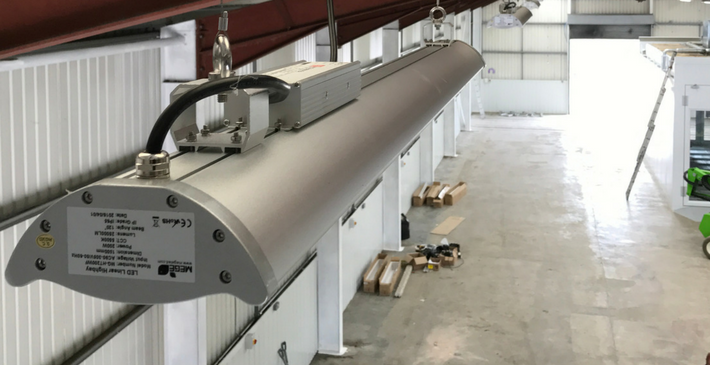
Lighting design needs to achieve many things:
Adequate light for occupants
Safety
Visual comfort
Aesthetic
All lighting installations and LED retrofits need to start with a survey of the premises to produce a map of the building showing dimensions as well as task areas, corridors, meeting rooms, reception areas etc.
In order to design an efficient lighting system it is essential to understand building use and also patterns of use – occupancy hours and intermittency of occupancy (allowing savings through the use of presence / absence detection). The survey should also review the potential for daylight harvesting.
Finally, in a retrofit situation, the survey should include a thorough audit of the lights and controls already in place.
Most lighting standards / codes use illuminance (luminous flux / m2) measured in lux as the main quantitative criterion for lighting design.
For example recommended levels of lighting on the work plane for an office environment are as follows:
There are then recommended levels for background illuminance, cylindrical and vertical illuminance. These can be achieved using a combination of direct light and reflected light.
Note that the recommended levels are for maintained illuminance. Higher illuminances are achieved initially with new lamps and clean luminaires. It is usually advisable to use dimming controls at the outset to dim the lights down to the desired level.
Maintained illuminance is the expected output at the end of the life of the lighting system (usually the L70 useful life), when lamps have aged.
The L70 useful life: the time for 50% of a batch of products to fade to 70% of their original light output (when driven under constant current drive conditions). 70% of the initial light output is usually deemed to be the value beyond which the light output becomes unsuitable for purpose.
The next step is to choose appropriate light fittings for the environment. For most working and educational environments, there is a fairly standard range of fittings to choose from. In general, once a style has been chosen the main variables to be determined are colour temperature, the lay-out of the fittings and the controls.
However for retail or hospitality environments and for residential lighting, the choice is far greater and we generally recommend that a lighting designer is used to achieve the required aesthetic / ambience. We can assist with this.
The building and proposed lighting scheme should be modelled using lighting software to ensure the required lighting level and uniformity is achieved, whilst minimising glare.
Once the lighting scheme has been designed, controls should then be specified with a view to enhancing user comfort and flexibility, and reducing energy bills.
Controls allow:
For more information, see our Buyers Guide – Controls.
Add in emergency lighting as necessary.
Before rolling out a lighting scheme, it is advisable to test some fittings in situ, particularly when colour temperature is being changed.
For large commercial clients, we offer LED lighting as a service. There is no upfront cost for the design, installation or maintenance of the system. Instead it is paid off from the bill savings over 5 years.
Once the design and testing stage is complete, the lights can be installed. We will produce a schedule of works to minimise disruption and downtime, potentially working out of hours as required.
Copyright © Spirit Energy 2025 · info@spiritenergy.co.uk · 0118 951 4490
Jobs and Careers
Interested in joining the Spirit team? Email jobs@spiritenergy.co.uk
Spirit House, 25 Albury Close, Reading, RG30 1BD
(Location formerly known as 44 Portman Road, Reading, RG30 1EA)
Spirit Energy is the trading name of Spirit Solar Ltd · UK Company Number 07138647
Although care is taken to ensure that the information on our website (www.spiritenergy.co.uk) and any guides, calculators or checklists provided by us, electronically or otherwise, are accurate and up-to-date, we cannot accept any responsibility for mistakes or omissions. We enter into no express or implied conditions, warranties, terms or representations regarding the quality, accuracy or completeness of the information. We exclude to the extent lawfully permitted all liability for loss or damage, whether direct, indirect or consequential arising out of your use of our website or any guides, calculators or checklists provided by us, or from any information or omission contained in our website or any guides, calculators or checklists provided by us.